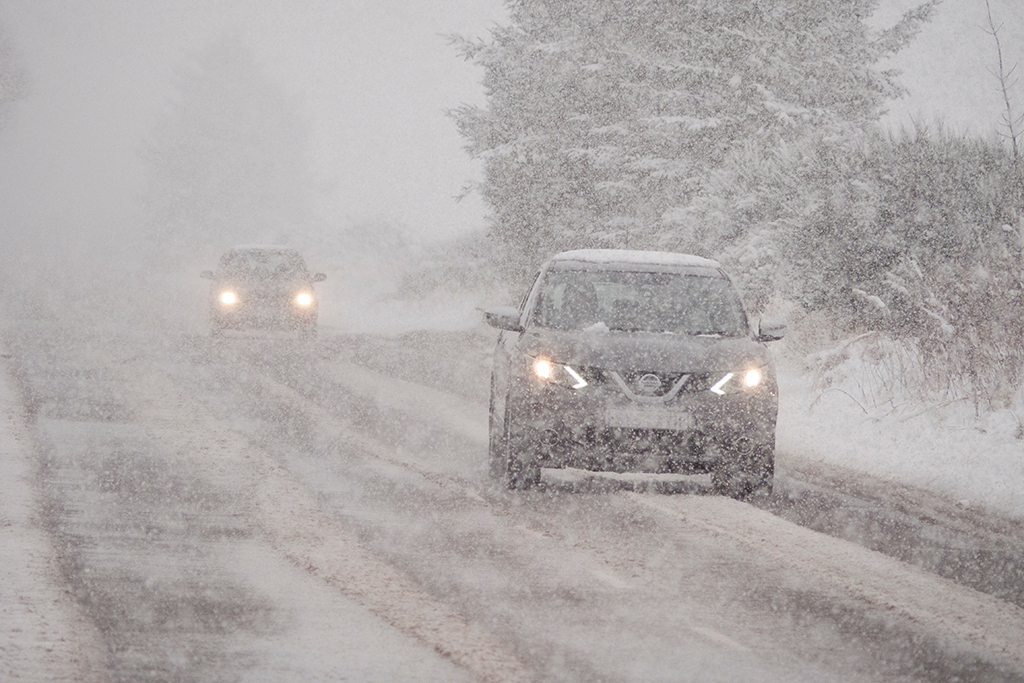Car owners in Scotland are more likely to carry an umbrella than basic safety equipment.
That’s the surprise statistic to emerge after an NFU Mutual and RAC survey of more than 1,500 UK-wide car owners on their ability to cope with a winter breakdown.
As a result, a rural insurance company is urging Scottish drivers to prioritise in-car safety equipment.
The research by the motor insurer and rural specialist NFU Mutual, showed that a huge 57% of Scottish car owners have broken down in their lifetime – that’s more than 2.1 million breakdowns, given an estimated 3.8 million people drive in Scotland.
Given their experience, it’s perhaps understandable that 70% of Scottish car owners choose to have breakdown cover, ensuring a rescue service if stranded.
However, a concerning number of Scottish drivers could still find themselves in a dangerous situation as the research reveals they are more likely to carry an umbrella than basic emergency safety equipment.
Shockingly, the research showed only 14% of car owners in Scotland keep a warm blanket or warm clothes handy, putting themselves and their families at risk of hypothermia if breaking down in freezing Scottish weather.

While two in five (40%) of Scottish car owners always keep an umbrella in their car, they are also more likely to keep chewing gum and mints in their vehicle than safety items such as red reflective warning triangles, high visibility jackets or jump leads.
The research showed that women across the UK are particularly vulnerable as they are less likely than men to keep most safety items in their car.
Aleks Corr, motor insurance specialist at NFU Mutual, said: ‘It’s great that the majority of drivers have a rescue service in place, with a whopping 70% of Scottish car owners choosing to have breakdown cover. But when you scratch under the surface, drivers are unprepared for the call-out itself, which is a particular risk in the dark, cold weather and even more so if breaking down on isolated and unlit rural roads.
‘While brollies might be among the essentials for daily Scottish life, don’t forget the safety fundamentals such as a torch, blanket and a spare tyre to prepare for a breakdown. Keeping basic safety equipment in your car could spell the difference between a minor inconvenience and a traumatically freezing and potentially hazardous family event.
‘While technology can be a real lifeline, don’t completely rely on it. Poor signal or a low battery may mean it lets you down when you need it most. Always keep an in-car charger handy, but also equip yourself with analogue alternatives including a road atlas and your breakdown service number written on a piece of paper. Familiarise yourself with safety tips and what to do in an incident, such as how to park safely or how to find an SOS phone on the motorway.’
According to the RAC’s UK-wide figures, wheel changes are the most common cause of breakdown after battery problems. So it’s alarming to find 36% of UK drivers don’t have a spare tyre in their car and a further half don’t know how to change one (49%), rendering them stranded and potentially in danger in the case of a blow-out.
Road traffic accidents, engine management issues with modern computer-led vehicles and PNS (puncture, no spare) are also cited by the RAC as the main reasons for breakdowns.
NFU Mutual’s research found that three quarters (75%) of Scottish drivers don’t know what to do if their car overheats and only a third (33%) know what the arrows on the motorway (which lead towards an SOS phone each mile) mean. Only half (52%) of Scottish car owners know what to use a red warning triangle for and only 20% have one. Britain is the only country/state in the EU that does not stipulate mandatory use of warning triangles if breaking down.
At NFU Mutual, breakdown cover from RAC is included in its car insurance policy as standard.

Safety tips from the RAC
The RAC recommends drivers remember their winter ‘FORCES’. Checking these before a journey can dramatically cut the chances of a breakdown:
F is for FUEL – Ensure you have enough fuel for your journey. Cars use more fuel in heavy traffic and start/stop conditions
O is for OIL – To avoid engine damage and a potential breakdown, remember to check your oil level and top up when necessary
R is for RUBBER – Check tyres have plenty of tread and are inflated properly – and don’t forget to check windscreen wiper blades are clearing screens effectively
C is for COOLANT – Make sure it’s at your vehicle manufacturer’s recommended levels – if not, get it checked at a reputable garage
E is for ELECTRICS – Check all your lights are working correctly including your indicators, brake lights and fog lights – and replace any faulty bulbs or blown fuses
S is for SCREENWASH – Top-up your windscreen washer fluid by using a good quality screenwash which is effective down to very cold temperatures. Remember that colder conditions demand a more concentrated solution
NFU Mutual advises on items to carry in your vehicle, packaged in waterproof bag to protect against flooding:
- Warm blanket, warm clothes handy and waterproofs
- Non-perishable food and water
- Red reflective warning triangles
- High visibility jackets
- Jump leads
- Torch
- Sunglasses
- A spare tyre and jack
- Road atlas
- Breakdown service number written on a piece of paper
- In-car charger
- First aid kit
- Ice scraper / de-icing kit
TAGS

